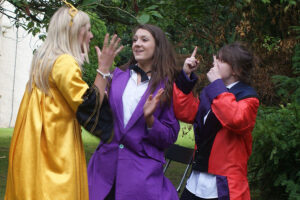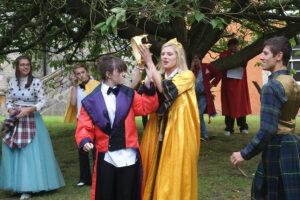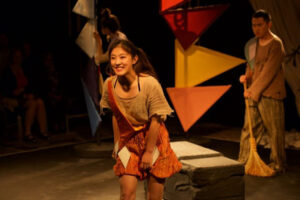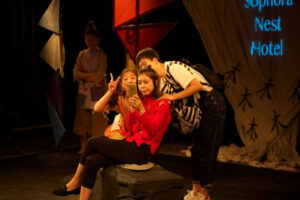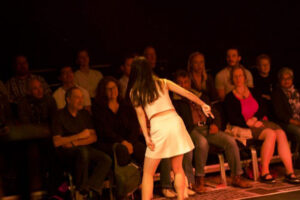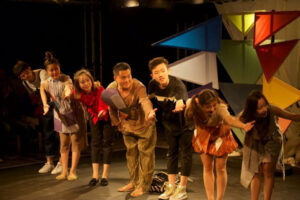Education
For schools
It’s wonderful to see such young and local talent invited onto the stage – and treated, not as hangers-on, but as full-blown members of the company.
Richard Stamp, Fringe Guru
In the promenade production of King Arthur, students performed the play-within the play section, alongside the professional actors. English analysed the play, writing essays in response. Their teacher found the text allowed her to apply the same teaching methods to a modern play as the classic verse drama – and with no barrier to language, it can be used as an accessible ‘gateway’ to the originals.
For university
At the Cambridge University Shakespeare Conference, I presented a paper exploring the reasons why – even though it’s still popular among directors, actors and producers, modern writers don’t tend to use blank verse – and how there are advantages to doing so.
At the same conference, director Andy Corelli held a workshop exploring the use of the play’s modern blank verse to an international audience of students, academics and theatre practitioners. Film maker and lecturer Joe Margiotti presented a film taken at the promenade performance of King Arthur – which he edited with his students – to demonstrate techniques involving filming verse drama, particularly referencing Fellini’s work with Shakespeare plays.
Academic response
I was hugely impressed by your use of a modern version of blank verse.
Professor Andrew Gurr, leading theatre historian
Read Andrew’s appraisal here.
Professor Jessica Winston used King Arthur to compare it to very early verse drama Gorboduc – which I hadn’t heard of when writing! It illustrates the point that writing a play in this form leads to certain decisions, even though the scripts are very different in other ways. You can read more here.
International
As a specialist in blank verse, I was fortunate to be involved in an unusual academic and performance project organised by the University of Leeds to mark the 400th anniversary of the deaths of both Shakespeare and the Ming dynasty playwright Tang Xianzu. You can read more here.
